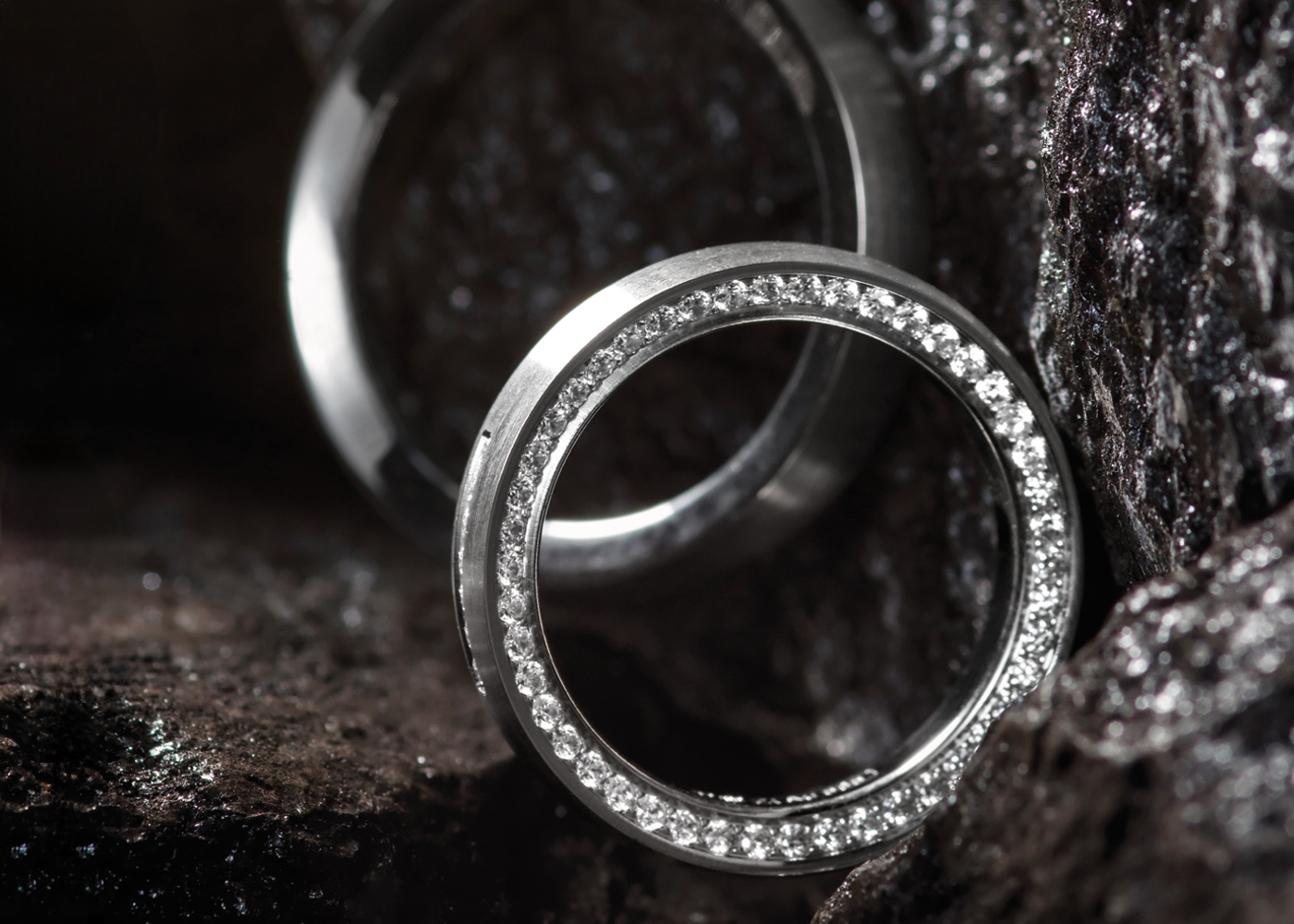
Platinum 600 & Palladium 500 Are Affordable, Luxurious, and on the Cutting Edge of Style
Some of us remember the 90s as a decade of flannel, loud guitars, and not washing your hair, but for others, it was the decade of bling. By the final decade of the 20th century, the jewelry styles that took shape in the 19th century, such as yellow gold engagement rings, had become traditional and ubiquitous—and maybe a little too mainstream for 90s tastes. Gen X brides didn’t want their grandmother’s heirloom ring; they wanted modern, sleek platinum engagement rings and wedding bands. At the same time, rappers were waving their platinum Rolexes in the air, and platinum gained its status as a metal a step above gold in terms of luxury and exclusivity. Platinum came to symbolize the very best: platinum membership, platinum credit card, platinum watch.
It seems that every so often platinum comes back in style, but the truth is since the technological advances of the mid-19th century transformed the metal from a curiosity seen only in a few Russian coins to a more durable, valuable replacement for silver in luxury jewelry, platinum has been a mainstay for those lovers of fine jewelry who want something a little different. Its only dip in popularity came during World War II, when the metal was needed for the war effort.
The Gold Standard, The Platinum Alternative
Since then, gold has remained the standard for luxury jewelry, but platinum has always been there for those whose eye is drawn to the unusual. What exactly makes platinum so alluring is hard to pin down. Colored gemstones like emeralds and sapphires pop against its white surface; the metal also provides a platform for diamonds to burst with fire and scintillation. It’s heavy and industrial. But it’s also modern and minimalist. But it’s also sophisticated and luxurious. It offers something different to gold, but what that “something” is depends on your personal style.
Platinum 600 Improves on a Classic
One of our signature metals is Platinum 600, an alloy of platinum containing 60% platinum and 40% other metals from the platinum group. The platinum group metals are a group of six precious metals: platinum, palladium, rhodium, ruthenium, iridium, and osmium. These metals are noble metals; that is, they are highly resistant to rust and tarnish. Their durability, rarity, and beauty make them among the most valuable metals on earth.
All alloys are mostly mixed with other platinum group metals. The exact “other metals” in our Platinum 600 alloy are our secret sauce, a mixture of hypoallergenic metals that improve on platinum’s durability and sophistication while actually making it more durable. On its own, platinum is a malleable metal. It can be scratched, dinged, and bent out of shape through normal wear and tear. By alloying it to harder metals, we can bring you the beauty of platinum without the risks of damage you get with the softer, more common Platinum 950 (90% platinum) alloy.
With Platinum 600, you get a more durable piece of jewelry with the same natural white luster as Platinum 950—and you get it at a fraction of the price. Due to its lower platinum content, Platinum 600 is significantly more affordable than Platinum 950 jewelry.
For the past 40 years, platinum prices had hovered slightly above gold prices. A few years ago, that changed, and the price of gold began to soar. At the time of writing this blog (April, 2025), the price of gold soared to over $3,000 per ounce—double its price five years ago—while platinum sits below $1,000 per ounce. Platinum 600 gives you all the luxury of platinum at an even lower price.
Palladium: The Alternative to the Alternative
Just as platinum has stood as a symbol of something different for decades, palladium, a precious metal from the platinum group, is a relative newcomer to the luxury jewelry world and is poised to become its next breakout star for those interested in something off the beaten path.
Not many jewelers are working with this metal yet, but we’ve developed a Palladium 500 alloy that contains 50% palladium, with the other 50% composed of a proprietary blend of metals chosen for their durability, affordability, and beauty. Just like platinum, it has a naturally white finish that won’t tarnish or require rhodium plating. Most people probably can’t easily distinguish between the two metals.
You’ll notice the difference right away as soon as you put it on. Palladium is less dense and therefore significantly lighter than platinum. A larger platinum piece of jewelry can start to feel pretty heavy after an extended period of wear. If you’re someone who is constantly pulling your rings on an off or tugging at your necklaces because you can’t seem to ignore the fact that you are wearing them, the weight of platinum can be a problem.
You’ll also notice the difference in price. Palladium is even more affordable than platinum, Palladium 500 even more so. As luxurious and durable as platinum, but at a lower price? It’s no wonder connoisseurs are starting to wake up to this slept-on metal.
Accentuate Your Diamonds or Express Yourself
Platinum 600 and Palladium 500 are two affordable yet luxurious alternatives to gold that bring out the beauty in diamonds or make a statement on their own. Visit the Design Center and see for yourself why these two metals are two of our favorites.